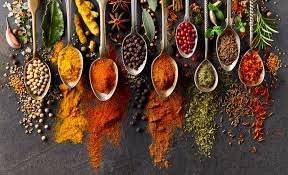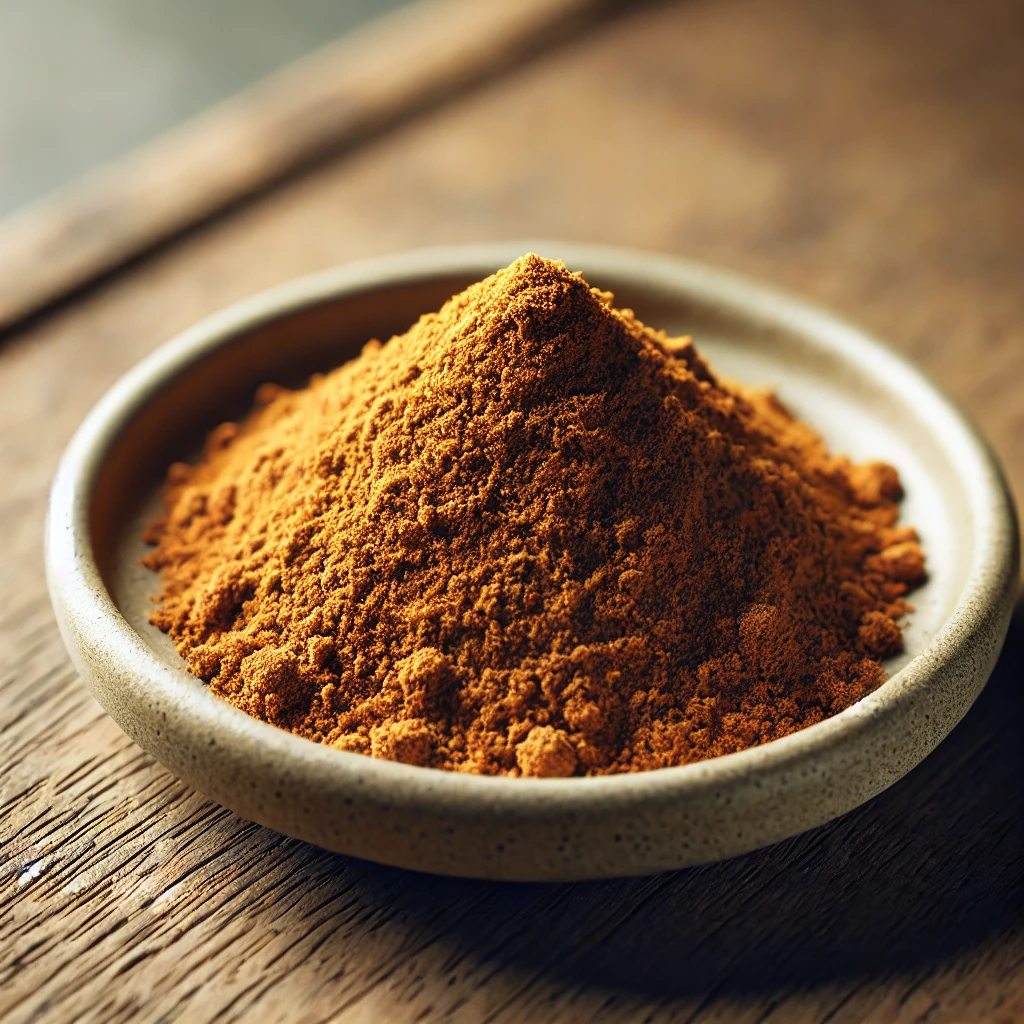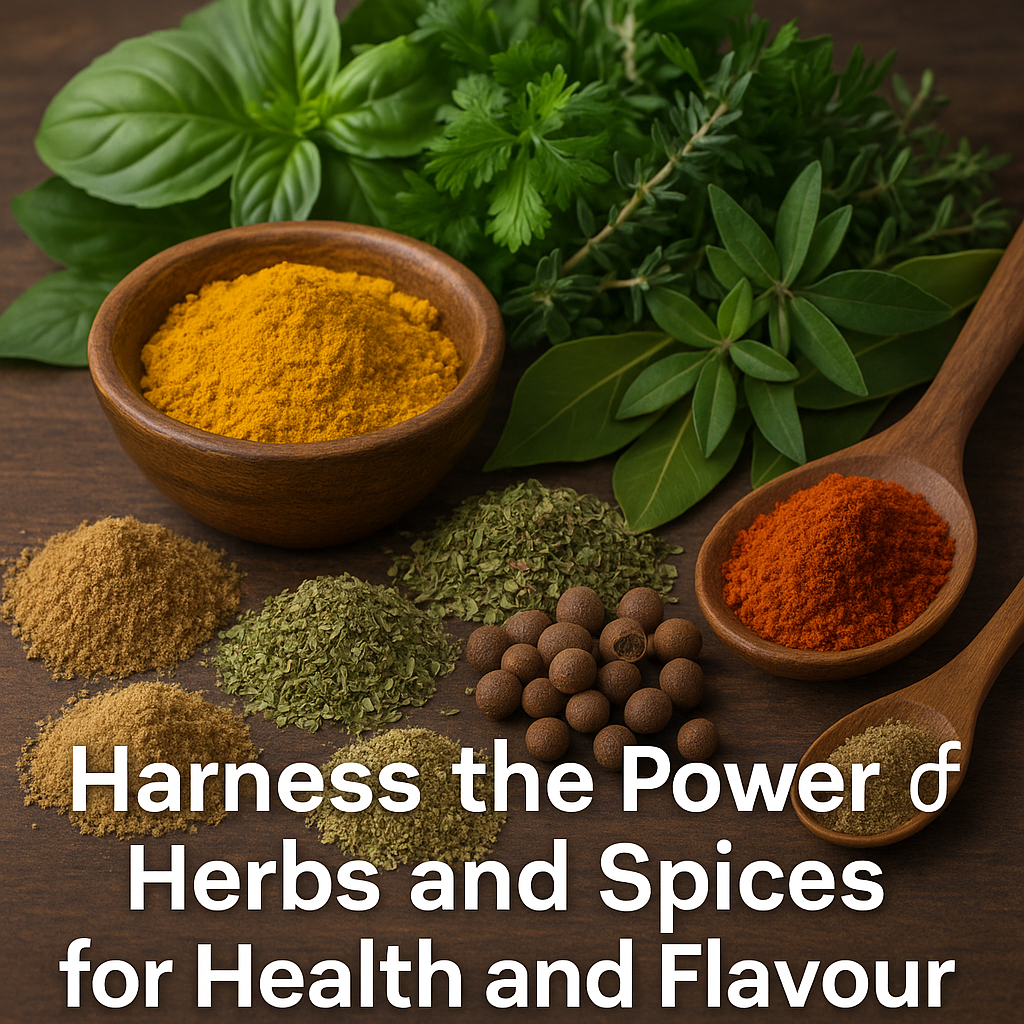How to harness the Power of Homemade Spices and herbs for Health and Flavor
Homemade spices have been essential in cooking around the world for centuries. More than just adding flavour, spices carry cultural importance, representing heritage and tradition.
Health experts agree that all-natural and homemade spices are good for your health, and the evidence supporting their medicinal properties continues to grow. Many dry rubs are packed with potent antioxidants, vitamins and minerals, which help protect the body from oxidative stress and inflammation.
Nature’s Medicine Cabinet: Healing Properties of Homemade Spices
For example, turmeric, with its active compound curcumin, has been shown to have powerful anti-inflammatory effects. Similarly, ginger has long been prized for its digestive benefits, easing nausea, reducing inflammation, and aiding in digestion. Cloves are not only aromatic but also contain eugenol, a compound with antiseptic and analgesic properties. Cinnamon, besides its delightful taste, may help regulate blood sugar levels and improve insulin sensitivity, making it a valuable ally for those managing diabetes.
The medicinal properties of homemade spices and herbs are not confined to just a few varieties. From basil to bay leaves, thyme to turmeric, each herb and spice brings its own unique blend of flavours and health-promoting compounds to the table. Even commonly used ingredients like garlic and onions boast impressive health benefits, including immune-boosting properties and cardiovascular support.

The Hidden Side of Spices: Processing and Additives
Like any food or ingredient, the effects of herbs and spices on health can vary depending on factors such as how they are prepared or processed. The dangers of food additives are well-known. However, they still plague our life in many ways, including that of our next meal. Food additives are the leading cause of allergies and have been linked to cancer and autism. These additives have been found to cause a strain on our health. We are what we eat. The quality of food determines the quality of life. We want our food to look good as well as taste good. Because of this, spice manufacturers use any of 14,000 additives made in a lab to make their products look fresher, more appealing, or last longer on the shelf.
Sadly, companies manufacture spices, used in combination with other ingredients in recipes, such as salt, sugar, or unhealthy fats, which can impact their overall healthfulness. It’s important to consider the context of how herbs and spices are used in cooking and to prioritize a diverse and balanced diet for optimal health.
The Bitter Truth: Adulteration in Spice Products
Beneath the surface of their delightful taste lies a lesser-known concern – adulteration. While homemade spices themselves are natural and wholesome, some commercially available spice products contain artificial food additives that might not be safe for everyone.
Some of the best seasoning and non- homemade spices and blends may contain added ingredients that can be detrimental to health. Here are a few examples of potentially unhealthy additives or ingredients that may be mixed with spices.
- Salt: Excessive salt intake has been linked to high blood pressure, heart disease, and stroke. Some spice blends, especially those used in savoury dishes or as seasoning mixes, may contain high levels of salt to enhance flavour.
- Sugar: Added sugars can contribute to weight gain, diabetes, and other health issues when consumed in large amounts. Sweet spice blends, such as those used for baking or desserts, may contain added sugar to enhance sweetness. You can avoid this by making your own homemade spices.
- Artificial Flavours and Colours: Some spice blends may contain artificial flavours or colours to enhance their appearance or taste. These additives may have adverse effects on health, especially for individuals with sensitivities or allergies to artificial ingredients.
- Preservatives: Certain spice mixes may contain preservatives to prolong shelf life and prevent spoilage. While preservatives are generally considered safe in small amounts, some people may experience adverse reactions or sensitivities to certain preservatives.
- Fillers and Additives: Some commercially prepared non home made spice blends may contain fillers or additives, such as maltodextrin, starches, or anti-caking agents, to improve texture or prevent clumping. These additional ingredients may add calories without providing significant nutritional value.
What are additives and why are they added to spices?
In today’s modern food industry, the convenience of pre-packaged spice blends has become increasingly prevalent. Artificial food additives are synthetic ingredients added to spices. Additives serve multiple purposes, such as enhancing the texture, appearance, and flavor of spices, and extending their shelf life. They also increase the net weight of products, raising profits for companies.
Additives can be either natural or synthetic, and are used for various purposes including preservation, flavour enhancement, coloration, and texture modification. Common additives in spice blends include preservatives to extend shelf life, anti-caking agents to prevent clumping, and flavour enhancers to boost taste. Flow agents like magnesium carbonate or calcium carbonate are used to improve the flow and consistency of spices during packaging.
Understanding the role of additives in spice blends is essential for making informed choices about the foods we consume.
Unseen Dangers: Health Hazards of Additives
While these blends offer convenience and consistency for manufacturers, many consumers are unaware of the hidden health hazards lurking within.
Unfortunately, some additives may introduce adverse reactions and potential health risks, leading to concerns about their impact on our well-being.
Some common additives, such as artificial colors, flavor enhancers, and preservatives, may trigger allergies or adverse reactions in certain individuals. Moreover, the cumulative effects of long-term consumption of these hidden dangers raise further questions about their impact on overall health.
To make informed choices, it is essential for consumers to identify harmful additives commonly found in spice products. Reading labels and ingredient lists becomes crucial in uncovering these dark spice secrets. However nothing better than grinding your own homemade spices and herbs for seasonings.
The Hidden Dangers of Additives: Know the Culprits
The most dangerous yet frequently found artificial food additives are:
Monosodium Glutamate (MSG)
Tartrazine (Food Coloring)
Benzoates Preservatives
Nitrates Preservatives
Sulfites Preservatives
Aspartame (Artificial Sweetener)
Additives like monosodium glutamate (MSG) are used to intensify the taste of spices, making them more appealing to the palate. While MSG is generally recognized as safe by regulatory agencies, some individuals may experience adverse reactions, commonly known as “Chinese restaurant syndrome.” These reactions may include headaches, sweating, or a feeling of warmth after consuming MSG. Sensitivity to MSG varies among individuals, and those who experience such reactions should be cautious when consuming spice products containing this flavor enhancer. When you are making your own homemade spices, you can be sure of any not adding any additives in your seasonings.
Fillers and anti-caking agents are additives used to improve the texture and flowability of a dry rub, preventing clumping and ensuring uniform dispersion of ingredients. Common fillers include maltodextrin, cellulose, and rice flour, while anti-caking agents such as silicon dioxide and calcium silicate are added to absorb moisture and prevent aggregation.
Take Control: Why Awareness Matters
The use of additives in spice blends raises important health concerns. Although many additives are considered safe in small amounts, their long-term effects are uncertain, especially with regular use. Some additives can cause allergic reactions, migraines, digestive issues, and skin irritations. They may also worsen existing health conditions or interact with medications. This highlights the need for awareness and moderation when not using homemade spice blends with additives.
Individuals with pre-existing health conditions may be especially sensitive to additives even in best seasoning spices. For example, people with hypertension or heart disease should monitor their sodium intake and avoid spices with high salt content to reduce the risk of elevated blood pressure and cardiovascular problems. Similarly, those with diabetes should be cautious of spice blends containing added sugars, as excessive sugar can disrupt blood sugar levels and worsen insulin resistance. Understanding how additives affect specific health conditions is essential for making informed dietary choices and managing health effectively. To be more conscious switch to making your own homemade spices.
The Better Alternative: Easy Dry Rubs and Homemade Seasoning
Instead of relying on pre-made products, making your own homemade spices is simple, affordable, and far healthier. With just a few pantry staples, you can mix up your own blend that is free of chemicals, high in flavour, and tailored to your needs.
Whether you are grilling meats, seasoning vegetables, or enhancing your soups and stews, the best seasoning spices are the ones you make yourself—pure, potent, and personal.
Final Thoughts: Choose Quality Over Convenience
We are what we eat. and when it comes to spices, what you don’t eat matters just as much. The convenience of pre-mixed blends often comes at the cost of health. By switching to easy homemade spices and herbs, you are taking a simple yet powerful step toward cleaner, better eating.
FAQs: Herbs, Spices, and Additives
Are all herbs and spices good for health?
Most natural herbs and spices are packed with beneficial compounds like antioxidants, vitamins, and minerals that support health. However, their benefits can be reduced or even negated if the spices are mixed with additives like salt, sugar, or artificial preservatives.
Why do companies add artificial ingredients to spice blends?
Additives are often used to improve shelf life, enhance flavor, or make spices look more appealing. Unfortunately, these artificial enhancers can pose health risks, especially when consumed frequently or in large amounts.
What are the most harmful additives found in spices?
Some commonly used but potentially harmful additives include MSG (a flavor enhancer), tartrazine (a food dye), benzoates and sulfites (preservatives), and aspartame (an artificial sweetener). These can cause allergic reactions or other health concerns in sensitive individuals.
How can I avoid harmful additives in spices?
Always check ingredient labels carefully. Look for single-ingredient, pure spices or spice blends labeled as additive-free, preservative-free, or all-natural. Buying from trusted sources or making your own homemade spice blends is also a safer option.
Can spice blends affect people with health conditions like diabetes or high blood pressure?
Yes. Spice mixes with added sugar or salt can negatively impact blood sugar levels and blood pressure. It is important for individuals with specific health conditions to choose clean, natural spice options without these additives.



